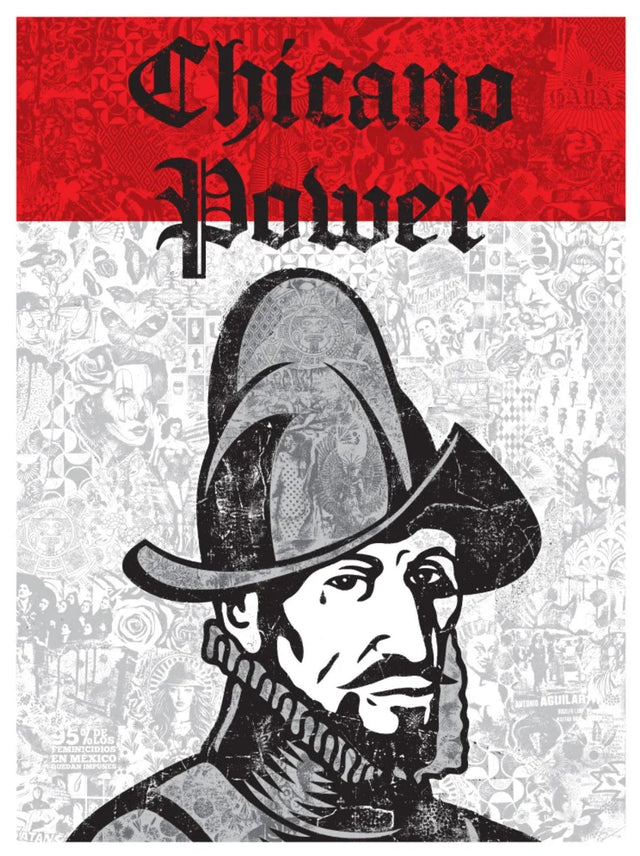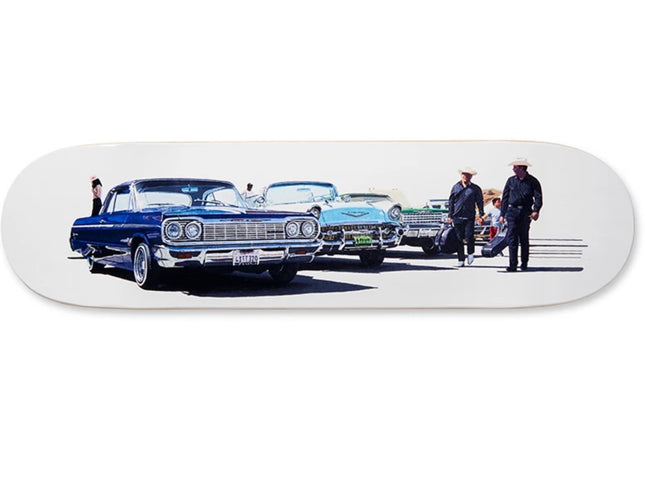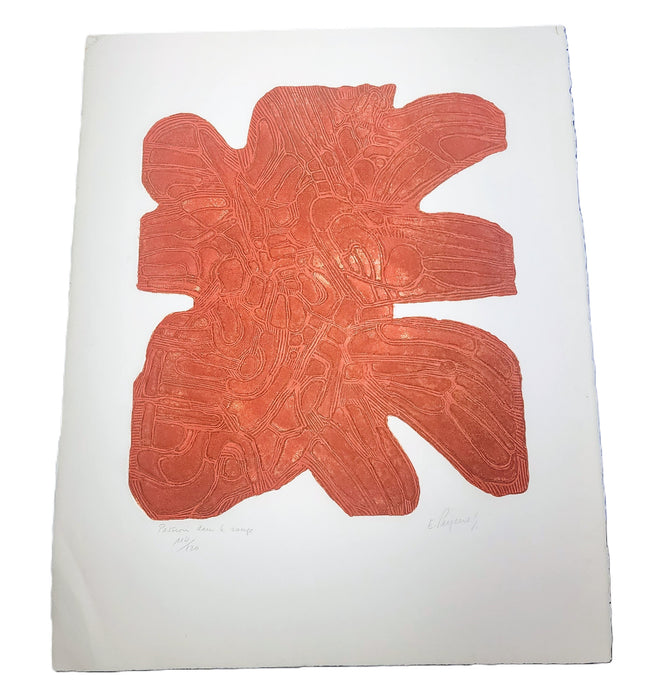
Latin

The Perez Bros Los Musicos Skateboard Art Deck by The Perez Bros
Los Musicos Deck Limited Edition Silkscreen Skateboard deck art by street pop culture artist The Perez Bros. Signed Limited Edition of 50 The Musician 2021 Skateboard Deck
$329.00

Enrique Peycere Passion Dans Le Rouge Lithograph Print by Enrique Peycere
Passion Dans Le Rouge Lithograph Print by Enrique Peycere Hand-Pulled Print on Deckled Fine Art Paper Limited Edition Contemporary Modernism Vintage Pop Artwork. 1986 Signed & Numbered Limited Edition of 120 Artwork Size 28x31 Hand Deckled Paper Contemporary Modern Abstract Red Artwork Titled Passion Dans Le Rouge, or Passion In The Red. Silght Handling Crease to Lower Left Facing Edge. Enrique Peycere and "Passion Dans Le Rouge": A Study in Abstraction The 1986 lithograph "Passion Dans Le Rouge," created by Enrique Peycere, captures the intense emotion and dynamic energy that the title, translating to "Passion In The Red," suggests. As a limited edition hand-pulled print on fine art paper, this work stands out with its contemporary modern abstract expression and generous dimensions of 28x31 inches. With only 120 pieces, each signed and numbered by the artist, the artwork secures its place as a sought-after piece for collectors and art lovers alike. The Vitality of Red in Peycere's Abstract Vision Peycere's choice of red is deliberate and loaded with symbolism. In art, red is often associated with passion, strength, and vitality, and in "Passion Dans Le Rouge," the color takes center stage, pulsating with life and vibrancy. The abstract forms that dominate the composition are reminiscent of organic shapes, alluding to the natural world or the human form, allowing viewers to engage with the piece on multiple interpretive levels. This abstraction aligns with the principles of pop art and graffiti, where color and form elicit a visceral response from the viewer. Abstract Expressionism's Echo in Street and Pop Art While Enrique Peycere's work predates the explosion of street pop art and graffiti, "Passion Dans Le Rouge" resonates with the energy and spontaneity that characterize these later movements. The abstraction found in Peycere's lithograph can be seen as a precursor to the abstract tendencies of street and pop art, where the emotional impact and the aesthetic experience often take precedence over representational accuracy. The boldness and simplicity of the work, combined with its abstract nature, make it a piece that transcends time and style, engaging with the universal language of color and form. As such, Peycere's "Passion Dans Le Rouge" not only contributes to the narrative of abstract art but also complements the broader conversation about the influence of abstract expressionism on contemporary street and pop art. Enrique Peycere's "Passion Dans Le Rouge" lithograph remains a powerful expression of emotion and artistry. Its abstract forms and vibrant red hues continue to captivate and inspire, much like the vivid street art that colors the urban landscapes of cities around the world. Through his limited edition works, Peycere has left an indelible mark on the art world, which continues to echo through modern and contemporary art.
$350.00



